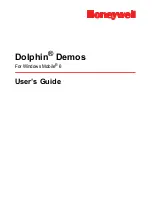
877
Programming Operations Guide
Appendix D
Configuring an analog device
Analog device DNs are programmed in the same way as digital telephone DNs. However,
programming settings will vary, depending on the type of analog device and how it is
connected to the Business Communications Manager system.
There are two types of analog devices: voice and data communications. Refer to the
following table for examples of voice and data communication devices.
The following hardware components are used to connect analog devices to the Business
Communications Manager system.
•
Analog Station Modules (GASM and ASM8)
Each ASM8/GASM connects up to eight analog devices on the Business Communications
Manager system.
•
Analog Terminal Adapter (ATA2)
The ATA2 unit connects one analog device to the Business Communications Manager system
through a port on a Digital Station Module (DSM).
Refer to the following table to review feature availability based on the analog device type
and if it is connected to an Analog Station Module (GASM or ASM8) or to an ATA2.
Table 282
Analog devices
Voice devices
Data communication devices
•
standard analog telephones
•
fax machines
•
analog telephones with a display
•
modems
•
answering machines
•
credit card verifiers (POS terminals in UK)
Table 283
Feature matrix for analog devices
GASM
ASM8
ATA2
Telephone
Fax or
modem
Telephone
Fax or
modem
Telephone
Fax or
modem
Message Waiting Indication (MWI)
Tone indication
Lamp indication
Yes
Yes
N/A
N/A
Yes
N/A
N/A
N/A
Yes
N/A
N/A
N/A
Call Display (CLID)
Yes
**
Yes
**
N/A
N/A
N/A
N/A
Disconnect Supervision
Yes
**
Yes
**
N/A
N/A
N/A
N/A
**
CLID and Disconnect Supervision are only available on ASM8+ modules using the North American profile.
Summary of Contents for BCM 3.7
Page 4: ...4 Software licensing N0008589 3 3...
Page 32: ...32 Contents N0008589 3 3 W 937 Index 939...
Page 46: ...46 Tables N0008589 3 3...
Page 64: ...64 How to get help N0008589 3 3...
Page 90: ...90 Manually activating Telnet N0008589 3 3...
Page 116: ...116 Delayed system restart N0008589 3 3...
Page 194: ...194 Configuring a data module N0008589 3 3...
Page 276: ...276 Setting line telco features N0008589 3 3...
Page 310: ...310 Using COS passwords N0008589 3 3...
Page 364: ...364 Enhanced 911 E911 configuration N0008589 3 3...
Page 380: ...380 Renumbering DNs N0008589 3 3...
Page 398: ...398 Saving wizard pages on your computer N0008589 3 3...
Page 458: ...458 Voice Mail settings N0008589 3 3...
Page 488: ...488 Setting system telco features N0008589 3 3...
Page 508: ...508 Other programming that affects public networking N0008589 3 3...
Page 522: ...522 PRI networking using Call by Call services N0008589 3 3...
Page 592: ...592 Monitoring Hunt groups N0008589 3 3...
Page 636: ...636 Configuring Double Density N0008589 3 3...
Page 640: ...640 Using the Network Update Wizard N0008589 3 3...
Page 666: ...666 Importing and Exporting DHCP data N0008589 3 3...
Page 722: ...722 Restarting the router N0008589 3 3...
Page 726: ...726 Important Web Cache considerations N0008589 3 3...
Page 748: ...748 Configuring an Interface with NAT N0008589 3 3...
Page 794: ...794 IPSec N0008589 3 3...
Page 818: ...818 Configuring the Policy Agent characteristics N0008589 3 3...
Page 832: ...832 Firewall rules for Business Communications Manager with Dialup interfaces N0008589 3 3...
Page 876: ...876 ISDN Programming N0008589 3 3...
Page 1004: ...1004 Index N0008589 3 3...
















































